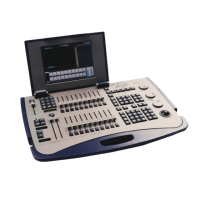CHAPTER 23
SMPTE
This chapter includes:
Configuring the system for SMPTE
Configuring the number of frames
Teaching SMPTE Time Codes
Starting at a selected event
Exiting the teach function
Manual assignment and editing the SMPTE time code
Playback with SMPTE
Exiting SMPTE playback

